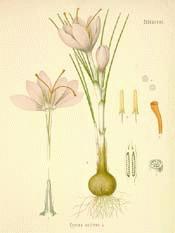I. Preparation for Rebuilding
ch. 1 Preparation of Prayer
a. Discovery of problem
b. Confession in Prayer
c. Appeal to the Promise
ch. 2 Request and Inspection
a. Nehemiah Requests
b. Artaxerxes Commissions
c. Nehemiah Inspects the Wall
II. Building of Wall
ch.3 Record of the Rebuilders
a. Eliashib, etc...
b. Joiada, etc....
c. Hanun, etc.
d. Nehemiah, etc.
e. The Priests, etc.
ch. 4 Opposition and Determination
a. Sanballat's Defamation
b. Conspiracy to Confuse
c. Working and Watching
ch. 5 Restoration of the Poor
a. Outcry of the Poor
b. Rulers Rebuked
c. Nehemiah's Generosity ch. 6-7.73a Completion of the Wall
a. Sanballat's Ruse
b. Nehemiah's Brave Response
c. Wall Completed
d. Register of the Genealogy: Registration, People, Priests, Levites, Singers, Gatekeepers, Nethinim, Solomon's servants, Those of uncertain lineage, totals & gifts
III. Renewing the Covenant
ch. 8 Words of the Law Read
a. Words of the Law Read
b. Feast of Tabernacles Observed
ch. 9 Sins of Confessed (Should be a two part message)
a. Gathering of the People
b. Blessing the Lord of Creation
b. Blessing the Lord of Creation
c. Acknowledging the Lord
d. Recounting God's Kindness
e. Rebelling in the Exodus
f. Providing of the Land
g. Repeating Disobedience
h. Recounting God's Justice
i. Renewing the Covenantf. Providing of the Land
g. Repeating Disobedience
h. Recounting God's Justice
ch. 10 Covenant Renewed
a. List of Signers
b. Separation and Sabbath
c. "Taxes" for the Temple
d. Firstfruits Requireda. List of Signers
b. Separation and Sabbath
c. "Taxes" for the Temple
IV. Nehemiah's Two Terms as Govenor
Ch. 11-12 Wall Dedicated
a. List of People in Jerusalem
b. List of People outside Jerusalem
c. Record of Priests and Levites
a. List of People in Jerusalem
b. List of People outside Jerusalem
c. Record of Priests and Levites
d. Dedication of the Wall
e. Temple Appointments
ch. 13 the law enforced
a. Backsliding While Nehemiah Was Gone
b. Contending for Sabbath Observance
ch. 13 the law enforced
a. Backsliding While Nehemiah Was Gone
b. Contending for Sabbath Observance
c. Contending Against Paganism
So why does this blog program keep skipping lines when I repost something?
http://www.amazon.com/Ungers-Commentary-Testament-Merrill-Unger/dp/B002T451Y0/ref=sr_1_1?ie=UTF8&s=books&qid=1260039139&sr=1-1-spell
I. Nehemiah's return and building of the wall 1-7
ch1. prayer for Jerusalem
ch2. mission to Jerusalem
ch3. rebuilding city walls
ch4. opposition to work
ch5. Nehemiah's social and economic revival
ch6. Nehemiah and further enemy plots
II. Spiritual revival
ch.8 Reading the Law and revival
ch.9 Humiliation and confession of sin
ch.10 Pledge and reform
III. Other events of Nehemiah's first term as govenor
ch.11 Population of Jerusalem and its environs
ch.12 Lists of inhabitants and dedication of the walls
IV. Nehemiah's second term as govenor
ch.13 Reforms and Nehemiah's second term
Swindoll
1. Overview
2. Nehemiah of His Knees 1.1-11
3. Preparation for a Mighty Task 2.1-11
4. Motivation: the Basis of Leadership 2.11-20
---MIA chapter 3---
5. Knocked Down, but Not Knocked Out 4.1-9
6. Discouragement: Its Cause and Cure 4.9-23
7. Love, Loans, and Money Problems 5.1-13
8. How to Handle a Promotion 5.14-19
9. Operation Intimidation 6
---MIA chapter 7.5-73---
10. Revival at Water Gate 8
11. The Fine Art of Insight 8.13-18
12. Four-dimensional Praying 9, 10.29b-31, 39b
13. Putting First Things First 10.28-39
14. In Honor of the Unknowns 7.1-4 & 11
15. Happiness Is a Walk on the Wall 12
16. Taking Problems by the Throat 13
The Accrostic Bible
http://www.amazon.com/Acrostic-Bible-Barry-Huddleston/dp/0840756461
Jerusalem's tragic plight mourned
Enlisting the king's support
Record all workers
Undermingin attacks y Samaritans
Selling Jewish children renounced
Assembling wall despite oppostion
Ledger of returning Jews
Explanation of God's Law
Making confession of sin
Witnesses to signed covenant
Account of Jeruslem's leaders
Levites lead temple dedication
Levites restored to temple
Talk Thru the Bible
http://www.amazon.com/Talk-Thru-Bible-Bruce-Wilkinson/dp/0785212213/ref=sr_1_1?ie=UTF8&s=books&qid=1260039683&sr=1-1
Reconstruction of the Wall (Political)
Preparation to Reconstruct the Wall 1.1-2.20
-Discovery; Intercession; Arrival; Preparation
Reconstructi3on of the Wall 3.1-7.7
-Record of Builders; Opposition; Completion; Organization of Jerusalem; Registration
Restoration of the People (Spiritual)
Renewal of the Covenant 8.1-10.39
-Interpretation of Covenant; Reaffirmation of Covenant
Obedience to the Covenant 11.1-13.31
-Resettlement or People; Register of Priests & Levites; Dedication of Wall; Restoration of People
H.G.M. Williamson in Word Biblical Commentary
- Nehemiah's Vocation 1.1-11
- Nehemiah's Commission 2.1-10
- Nehemiah's First Steps in Jerusalem 2.11-20
- Rebuilding the Walls 3.1-32
- Renewed Opposition 4.1-5 (3.33-37)
- Further Opposition and Countermeasures 4.6-23 (3.38-4.17)
- Internal Difficulties 5.1-19
- The Completion of the Wall 6.1-19
- The Need to Populate Jerusalem 7.1-73a
- The Reading of the Law 7.73b-8.18
- Confession 9.1-37
- A Pledge to Keep the Law 9.38-10.39 (10.1-40)
- The Population of Jerusalem and Related Matters 11.1-36
- Priests and Levites 12.1-26
- The Dedication of the Wall 12.27-43
- The Temple Chambers: Use and Abuse 12.44-13.14
- Concluding Reforms 13.15-31




